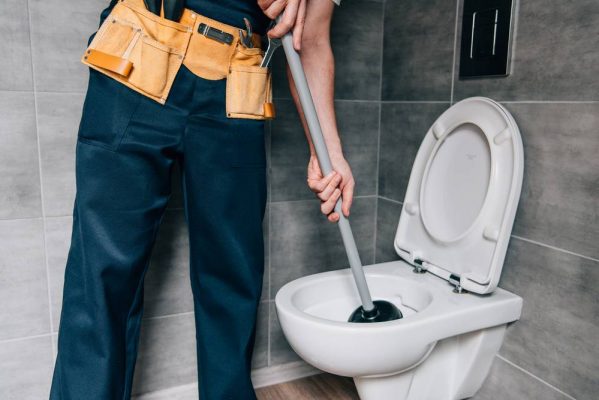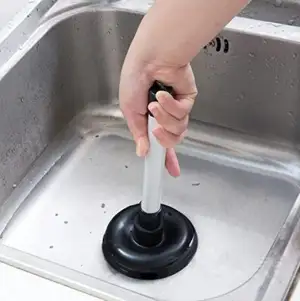Using Plunger and Drain Cleaners: Effective Techniques
Using Plunger and Drain Cleaners: Effective Techniques
Blog Article
On this page on the next paragraphs you can discover a good deal of high-quality news pertaining to How To Use Your Toilet Plunger Correctly in 5 Easy Steps.

Introduction
Proper upkeep of family drains is essential for protecting against blockages and guaranteeing smooth water flow. Among the trick tools in every home owner's toolkit is the plunger, together with numerous drainpipe cleaners developed to deal with persistent obstructions effectively. This short article checks out exactly how to utilize bettors and drainpipe cleaners successfully to maintain your drains streaming freely.
Section 1: Comprehending Bettors
Kinds of Plungers
There are a number of kinds of plungers readily available, each made for various kinds of drains and obstructs. One of the most typical types include mug bettors, flange plungers, and accordion bettors.
Just How Plungers Job
Bettors work on the principle of developing stress and suction to displace blockages. When effectively used over a drainpipe, they develop a vacuum cleaner that can take out particles or separate clogs.
Picking the Right Bettor
Picking the ideal plunger relies on the sort of drainpipe and the nature of the blockage. Cup plungers are perfect for sinks and tubs, while flange plungers are better suited for commodes because of their style.
Typical Mistakes with Plungers
Avoiding these mistakes ensures reliable plunging: inappropriate seal around the drain, inadequate force, and unclear bordering particles.
Area 2: Making Use Of Plungers Efficiently
Preparation
Before plunging, make sure the bettor covers the drainpipe totally and develops a tight seal. Clear any noticeable particles around the drain opening.
Technique
Start with mild diving motions to construct suction. Boost pressure gradually, making use of a consistent rhythm. Repeat as necessary till the drain gets rid of.
Fixing Tips
If plunging does not work, attempt adjusting the seal, using oil jelly for a much better seal, or making use of a different sort of plunger.
Area 3: Recognizing Drainpipe Cleansers
Types of Drain Cleaners
Drain cleaners can be chemical or enzymatic. Chemical cleaners utilize solid chemicals to liquify blockages, while enzymatic cleaners utilize all-natural enzymes to break down raw material.
Exactly How Drainpipe Cleaners Job
Chemical cleaners respond with clogs to liquify them, while enzymatic cleansers break down organic materials like hair and grease without harming pipes.
Safety Considerations
Constantly put on handwear covers and eye defense when making use of chemical drainpipe cleaners. Make sure appropriate ventilation and follow manufacturer instructions thoroughly.
Eco-Friendly Alternatives
Think about using vinegar and cooking soda or enzyme-based cleaners for eco-friendly alternatives that are safer for pipelines and the atmosphere.
Area 4: Utilizing Drain Cleansers Effectively
Application Strategies
Pour chemical cleansers straight into the drainpipe opening. Allow them to help the advised time before flushing with warm water. Chemical cleaners must sit overnight.
Preventative measures
Prevent mixing various kinds of cleaners, as this can generate hazardous fumes. Never utilize chemical cleaners together with a bettor, as spilling can occur.
Managing Persistent Blockages
For relentless obstructions, think about using a plumbing serpent or calling a specialist plumbing professional to prevent damages to pipelines.
Conclusion
To conclude, recognizing just how to make use of plungers and drain cleansers properly is essential for keeping healthy plumbing systems. By picking the right tools and techniques, home owners can deal with small blockages and prevent significant plumbing concerns down the line.
How To Properly Use A Plumbing Snake To Clear Drains
When any drain clogs in our home arise, we tend to gravitate toward the plunger and little else. In cases where the plunger and its vacuum-created pressure are not able to clear clogs, many immediately move to harmful chemicals or simply call their plumber to fix the issue.
we’re happy to help with all drain cleaning needs and concerns. This includes informing you on a few other home remedies you may have at your disposal for minor to moderate clogs, one of which is the use of a plumbing snake. Many people have never used one of these before – let’s go over the steps to take when your drain clogs and you have a plumbing snake available.
Attempt Plunger Use
The first step here, as we noted above, should indeed be to grab your plunger when you notice a drain clog and attempt to resolve it this way. If you’re unsure how to use a particular type of plunger, our plumbers can answer any questions you have. If this doesn’t do the trick, however, you move on to the snake.
Locate And Prepare Snake
A plumbing snake is a metal or plastic device that’s generally about a quarter of an inch thick. It’s design with significant extensions, meant to reach down into your clogged drain and push the clog out. Snakes also contain drain augers that will latch onto and push stubborn blockages.
If your plunger doesn’t clear a clog, locate your snake and bring it to the drain in question. We also recommend keeping a bucket nearby to collect the clog once you pull it out, plus we’d advise wearing goggles and possibly protective gloves.
Feed Snake
Once you’re ready to go, feed the snake slowly down the drain, using the crank device it comes with to keep it moving until it finds the clog. Once this happens, much of the clog will be latched onto the coil so you can pull it out, while the rest will simply break up and flow downward.
Detach Debris
Remove the snake slowly from the drain, and once you’ve done so, pick off any debris that’s stuck to the coil. This is another area where wearing gloves is a must.
Flush Drain
Finally, take a few minutes to ensure the snake has done its job correctly. If you’ve been using it on a toilet, flush the toilet a couple times and make sure everything flows well. If you’ve used it on a different drain, flush it with some room temperature water.
https://www.mybuddytheplumber.com/blog/how-to-properly-use-a-plumbing-snake-to-clear-drains/

Application Strategies
Pour chemical cleansers straight into the drainpipe opening. Allow them to help the advised time before flushing with warm water. Chemical cleaners must sit overnight.
Preventative measures
Prevent mixing various kinds of cleaners, as this can generate hazardous fumes. Never utilize chemical cleaners together with a bettor, as spilling can occur.
Managing Persistent Blockages
For relentless obstructions, think about using a plumbing serpent or calling a specialist plumbing professional to prevent damages to pipelines.
Conclusion
To conclude, recognizing just how to make use of plungers and drain cleansers properly is essential for keeping healthy plumbing systems. By picking the right tools and techniques, home owners can deal with small blockages and prevent significant plumbing concerns down the line.
How To Properly Use A Plumbing Snake To Clear Drains
When any drain clogs in our home arise, we tend to gravitate toward the plunger and little else. In cases where the plunger and its vacuum-created pressure are not able to clear clogs, many immediately move to harmful chemicals or simply call their plumber to fix the issue.
we’re happy to help with all drain cleaning needs and concerns. This includes informing you on a few other home remedies you may have at your disposal for minor to moderate clogs, one of which is the use of a plumbing snake. Many people have never used one of these before – let’s go over the steps to take when your drain clogs and you have a plumbing snake available.
Attempt Plunger Use
The first step here, as we noted above, should indeed be to grab your plunger when you notice a drain clog and attempt to resolve it this way. If you’re unsure how to use a particular type of plunger, our plumbers can answer any questions you have. If this doesn’t do the trick, however, you move on to the snake.
Locate And Prepare Snake
A plumbing snake is a metal or plastic device that’s generally about a quarter of an inch thick. It’s design with significant extensions, meant to reach down into your clogged drain and push the clog out. Snakes also contain drain augers that will latch onto and push stubborn blockages.
If your plunger doesn’t clear a clog, locate your snake and bring it to the drain in question. We also recommend keeping a bucket nearby to collect the clog once you pull it out, plus we’d advise wearing goggles and possibly protective gloves.
Feed Snake
Once you’re ready to go, feed the snake slowly down the drain, using the crank device it comes with to keep it moving until it finds the clog. Once this happens, much of the clog will be latched onto the coil so you can pull it out, while the rest will simply break up and flow downward.
Detach Debris
Remove the snake slowly from the drain, and once you’ve done so, pick off any debris that’s stuck to the coil. This is another area where wearing gloves is a must.
Flush Drain
Finally, take a few minutes to ensure the snake has done its job correctly. If you’ve been using it on a toilet, flush the toilet a couple times and make sure everything flows well. If you’ve used it on a different drain, flush it with some room temperature water.
https://www.mybuddytheplumber.com/blog/how-to-properly-use-a-plumbing-snake-to-clear-drains/

As a passionate reader on , I imagined sharing that excerpt was smart. Appreciated our piece? Please share it. Let someone else find it. Thank you for being here. Kindly come by our blog back soon.
Book With Us Today! Report this page